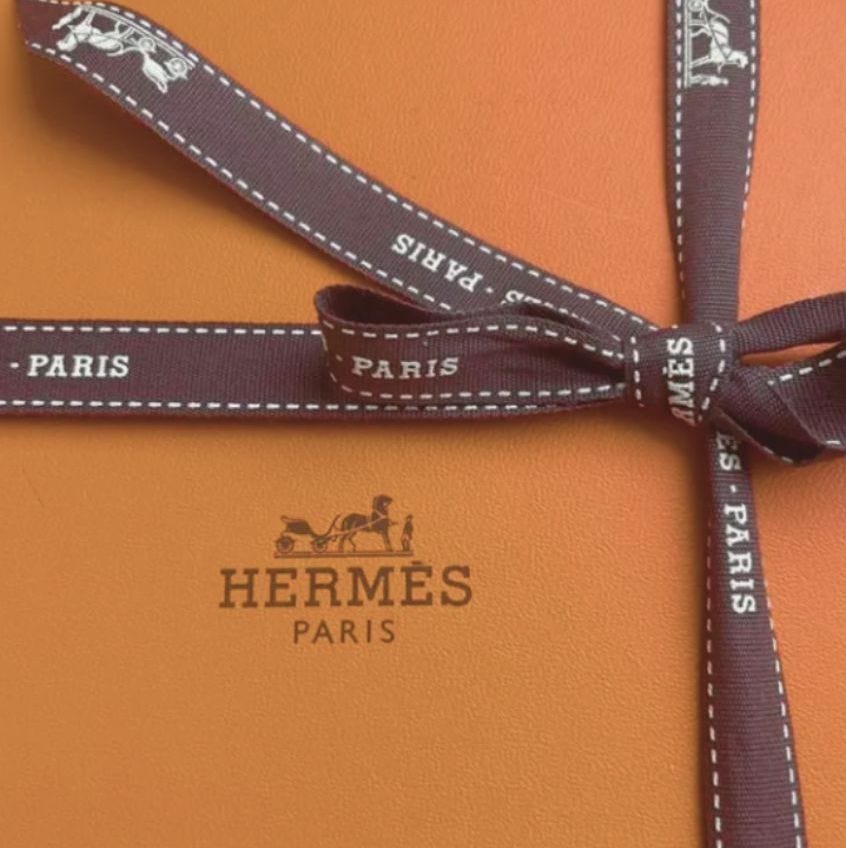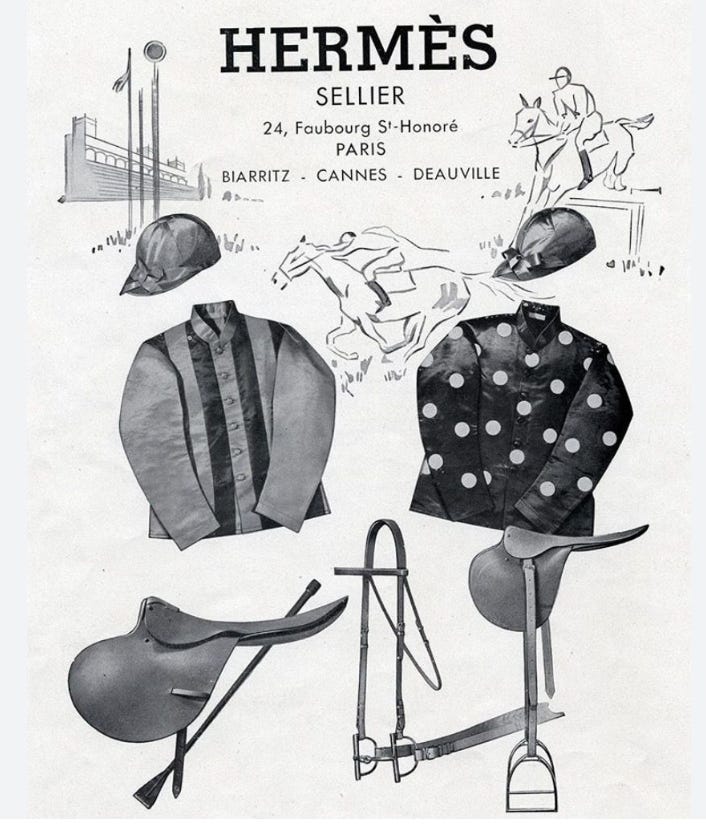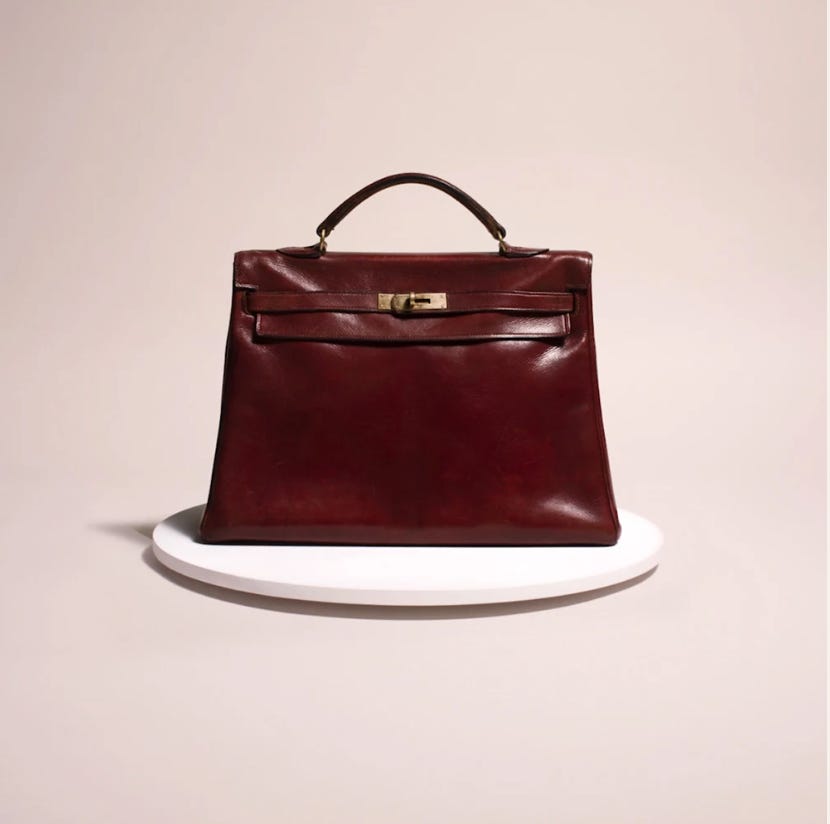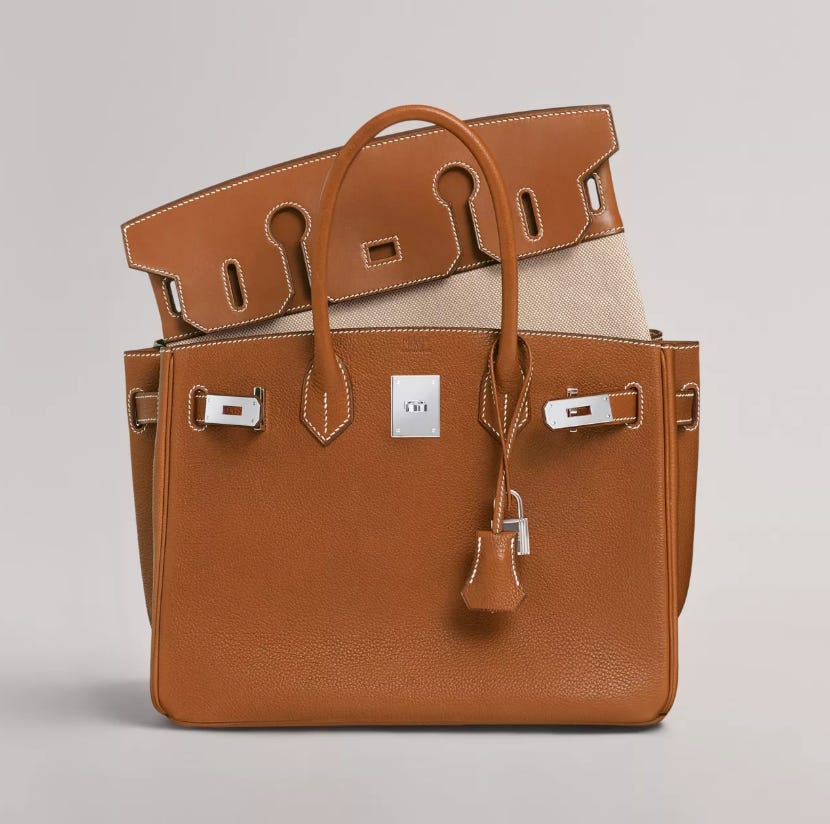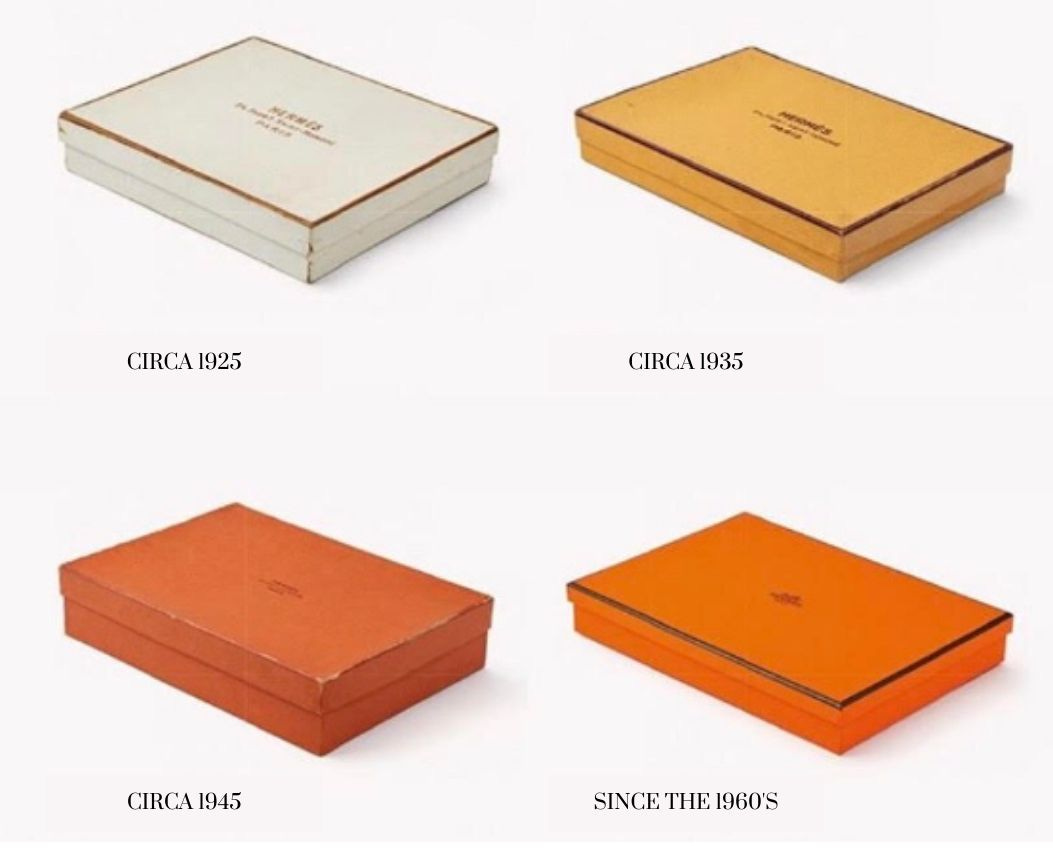SS-05: The legendary Hermès orange box
The orange box is iconic and a symbol of luxury, quality, and style. How did the unique color come about and helped build brand recognition?
The adventure began in Paris in 1837 when I was young—just kidding, now back to reality. The harness maker Thierry Hermès opened a workshop in rue Basse-du-Rempart. From the beginning, he understood and anticipated his customers' expectations, their desire for simplicity and lightness in a city filled with modern flare. The family business, now in its sixth generation of skilled artisans, has witnessed remarkable milestones.
Its origins go back to a rich heritage in leather production, specializing in crafting impeccable harnesses, saddles, bridles, and other leather riding gear for the elite equestrian community. In 1925, they released the first men’s ready-to-wear garment – a golf jacket 1925. Then notable landmarks include the introduction of iconic creations such as the Kelly bag in the 1930s, the Hermès scarf in 1937, and the renowned Birkin bag in 1984. Throughout its journey, Hermès has symbolized the epitome of luxury and sophistication.
The origin of the Hermès orange box
The brand's unique packaging, now a symbol of luxury, didn't always have its well-known orange color. In the 1920s, Hermès boxes sported a cream shade, mimicking pigskin, and later transitioned to mustard yellow in the mid-1930s. However, during the Second World War, there was a shortage of cream-colored and mustard cardboard boxes. So Hermès couldn’t use these colors anymore. The brand’s usual supplier had orange boxes available, though. Since it was a color that no one wanted, Hermès agreed to use it to be able to keep delivering its products.
Emile-Maurice Hermès, the founder's grandson, added a touch of refinement to the box by incorporating a brown ribbon and a horse-drawn eye logo. This meticulous attention to detail underscored the commitment to excellence in the packaging and delivery of Hermès's exquisite leather goods.
Hermès orange shades
Since adopting the distinctive orange color, Hermès has explored various shades, yet the essence has remained unchanged since the 1960s. The spectrum includes Potiron, Cornaline, Terre Battue, Crevette, Orange Poppy, Moutarde, Capucine, Sanguine, and Hermès Feu, each contributing to the brand's visual identity.
The Hermès orange hue is Hermès' signature orange, known as Orange, Orange H, or Classic Orange within the brand. In the extensive portfolio of Hermès colors, it’s color code 93. The shade is bright and clear, filled with energy and stamina. It’s so unique that no Pantone color is equivalent to Hermès orange!
In 2005, the European Union Intellectual Property Office refused to register it as a trademark. The organization claimed that orange is too familiar a color to be associated with a single brand. They added that consumers do not identify a brand by color. Therefore, registering it would mean granting an unjustified monopoly to Hermès. Despite some failed trademark registrations, the Hermès orange color is undoubtedly recognizable, and it’s one of the first things that comes to mind when one hears the name of Hermès.
I believe when it comes to branding, color plays an equally important part in shaping the brand’s image, preserving its heritage, and making it instantly recognizable. Other examples of brands whose color has become a symbol of their brand and status are Apple’s white packaging and Tiffany's Robin’s egg blue hue.
The craftsmanship of the Hermès orange box: elegant & eustainable
Hermès ensures that every product, from luxurious bags to silk scarves, ties, hats, boots, tableware, and jewelry, is impeccably presented in round, rectangular, or square boxes. Hermes has 188 different sizes, and only the furniture stands as an exception, being too large to fit within the confines of the iconic orange box.
Beyond its aesthetic appeal, the Hermès orange box boasts unparalleled quality. Crafted by manufacturers in France and Italy, the cardboard is made from 100% eco-friendly materials, with non-polluting water-based ink for lettering. The tissue paper and accompanying orange bag are sourced from sustainably managed forests, earning the prestigious FSC (Forest Stewardship Council) certification.
The Hermès orange box went from a lucky choice to a luxury symbol. It shows how Hermès turned something ordinary into a strong brand identifier. This unique color is now linked with exclusivity, tied to their equestrian history, and highlights Hermès's dedication to luxury and craftsmanship.
Drawing inspiration from Hermès' compelling brand story, I encourage you to reflect on the following:
Is there a color that you connect with and why?
Do you wear a color that instantly identifies you to others?
Have you established a color palette that defines your professional style brand?
______________________
Your engagement means the world to me, and I'm eager to connect with you on this journey. Share your thoughts, comments, and feedback on Substack, and let me know if there's a specific topic you're keen to explore together.





